1. Shipping delays
2. New VFO/SigGen kit firmware s1.03
3. Low distortion sinewave HF signal generator
4. Portage County Amateur Radio Service Ultimate3S buildathon
5. Ultimate3S on US 222MHz band
6. Balloon flights and ZL1RS ocean buoy news
7. Social media, Feedback, unsubscribing

1. Shipping delays
Firstly, apologies to all QRP Labs customers who have been affected by shipping delays. A number of factors conspired to cause these delays, and there are STILL delays on some orders.
- The part-time shipment office staff were on (well deserved) vacations over Christmas/New Year so there was already a backlog of pending orders when they got back on 06-Jan-2017.
- The 5W HF PA kit (pictured right) was released on 04-Jan-2017 and lots of these were ordered, leading to record number of orders in January, 45% higher than the previous record.
- It took time for the various postal services around the world to get back to normal after Christmas/New Year
- Some firmware chip shipments from manufacturers to the lab, and to the shipment office (after programming), got delayed - and one shipped on 2nd Feb appears to have been lost completely.
Thank you for your patience while things get back to normal. Ordinarily the shipment office send out the kits within 3 working days of the order, except the enclosure kits which are sent in batches once per week on Tuesdays.
2. New VFO/SigGen kit firmware s1.03
The VFO/SigGen kit s1.03 firmware release has some new features requested, though there is still quite a long list of outstanding enhancement requests! The changes are as follows:

- Increased the number of presets from 10 to 16 (labeled 0..F)
- Added 6 "Band Limit" configurations, for automatic selection of 6 relay-switched LPFs
- Added "Band" and "Aux" settings to the Preset screens
- Ref Freq defaults now to 27.004MHz which is generally closer to reality than 27.000MHz
- New display tags #LP to show the LPF filter in use (0..5), and #AX to show the value of the active Aux parameter
- Bug fix: if you turned the tuning knob too fast, the display lagged behind
- Bug fix: "Diagnostic mode" toggling the LCD data pins, was continuously active, even after leaving Diagnostic mode
The "Band" and "Aux" settings in the Preset screens behave similarly to the Ultimate3S Tx kit. They permit the VFO/SigGen kit to be used with the 6-band relay-switched filter kit for example. This could be useful in your multi-band homebrew radio projects. The "band limit" configuration parameters are also related to controlling the relay kit. One possible application is a sinewave output signal generator - this is described in App Note AN006 (see below).
As usual the new firmware version chip is available in the QRP Labs shop here, or if you have AVR programming equipment you can download the .hex file and upgrade your existing chip, from the QRP Labs group.
3. Low distortion sinewave HF signal generator
App Note AN006 describes a use for the new "band limit" configuration parameters in the VFO/SigGen kit. The Si5351A synthesiser chip has a squarewave output. In applications where you require a sinewave, Low Pass Filtering can be used to attenuate the harmonic content of the squarewave, leaving a nice sinewave. In this application the following QRP Labs kits are used:
- VFO/SigGen kit including Si5351A Synth module kit
- 6-band relay switched filter kit
- Six Low Pass Filter kits for bands 60, 40, 30, 20, 15 and 10m.
The "band limit" configuration parameters are set so that the VFO/SigGen kit firmware automatically selects an appropriate Low Pass Filter kit using the relay board. The Low Pass Filters are chosen with a 3:2 or 4:3 frequency ratio so that there is overlap in coverage, still providing good attenuation of the 2nd harmonics. If 2:1 ratio Low Pass Filter frequencies are chosen, then the frequency coverage of the signal generator is much wider but the 2nd harmonic attenuation is not good, leading to a less clean sinewave output.
In tests, this signal generator produces a very flat response over the range 2.9 to 34MHz, at 10.8dBm +/- 0.4dBm output into 50-ohms. The worst case spurious output was better than 45dB down. The QRP Labs shop has the kits required for this project available as a set, see http://shop.qrp-labs.com/sinesiggen.

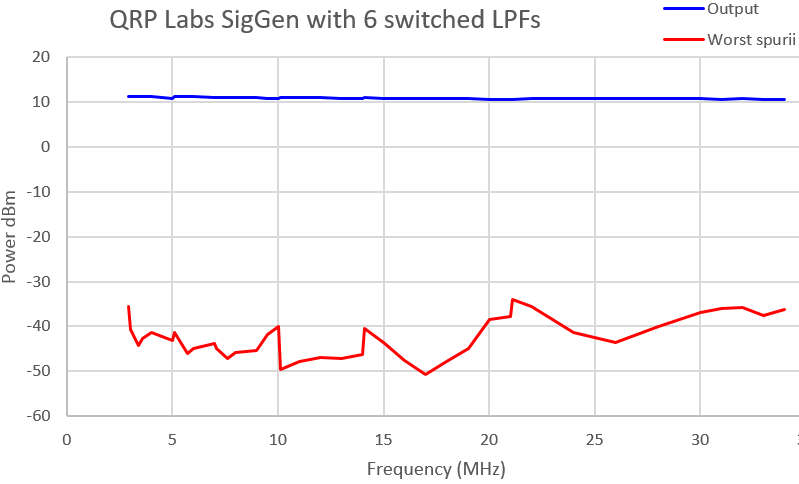
4. Portage County Amateur Radio Service Ultimate3S buildathon
Portage County Amateur Radio Service is a very active and thriving club in the US state of Ohio. In January the club "Build Day" buildathon featured the QRP Labs Ultimate3S QRSS/WSPR/JT65 transmitter kit. It was my pleasure to join the PCARS February meeting on 13-Feb-2017 via a Skype video link, and present a set of slides explaining the history and operation of QRSS and WSPR modes, the QRP Labs kits, and the applications of these modes, including for High Altitude Balloon tracking. The photos below are from the buildathon and one from my Skype presentation on 13-Feb-2017.



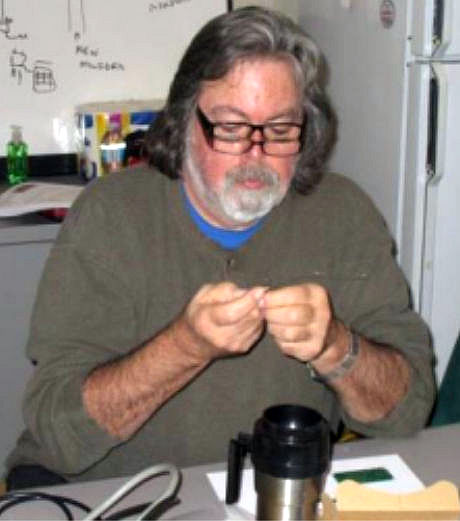
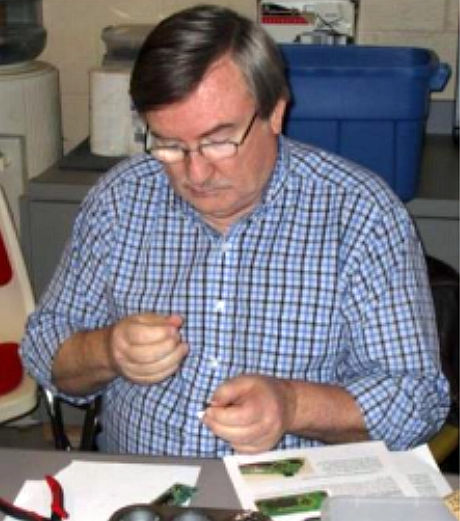
5. Ultimate3S on US 222MHz band
The datasheet specification of the Si5351A Synthesiser chip in the Ultimate3S QRSS/Transmitter kit says the maximum frequency is 200MHz. In reality testing shows that the chip is stable over a wider frequency range down to 3.5kHz, and up to almost 300MHz! Of course who knows what environmental or circuit factors may affect this upper frequency limit, or what performance measure deteriorates up there. It should be expected that spectral purity is generally worse, the higher the frequency.
Nevertheless Rick NM3G has designed and tested a Low Pass Filter to 222MHz, based on the QRP Labs Low Pass Filter kit board, but with air-coil inductors. The Ultimate3S transmitter appears to work well (albeit with low power output) on 222MHz and reception reports have been obtained. Read more about the 222MHz filter design, construction and performance here: http://www.qrp-labs.com/ultimate3/u3info/ultimate3222.html
6. Balloon flights and ZL1RS ocean buoy news
February saw the first QRP Labs High Altitude Balloon flight launches of 2017, both on the same day, 20-Feb-2017! The first was flight S-21 by Dave VE3KCL from Toronto, Canada; followed close behind by flight U3S-7 by Jim N2NXZ.
Dave VE3KCL used the special QRP Labs Ultimate3S transmitter firmware installed on his own board assembly, with the WSPR telemetry overlay first developed by QRP Labs. The entire payload weight was only 10.26 grams and flew on a single Qualatex mylar film "party" balloon. S-21 made very rapid progress South across the US and the following morning, woke up over Puerto Rico! However there appears to have been some new problem with the GPS, a reminder of how difficult this type of balloon flight is. The position reports were transmitted all day, but stuck at the same point over Puerto Rico without updating. The following morning (day 3) there was no sign of S-21. So presumably it hit bad weather, a high altitude storm, that could have brought it down. Full details here: http://www.qrp-labs.com/flights/s21.html. Dave has already built two more transmitter payloads, which will fly on S-22 and S-23 (they use a different GPS module!).

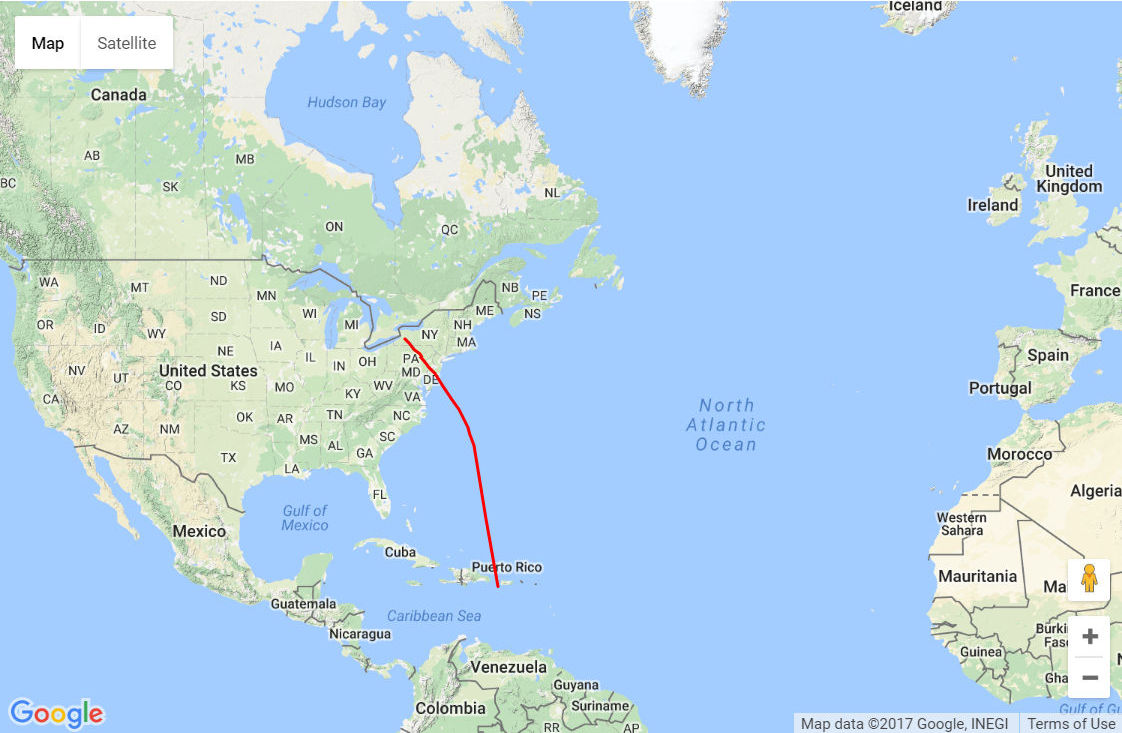
Jim N2NXZ used the standard QRP Labs Ultimate3S firmware installed on a bare ATmega328 chip, carried by two balloons. His position was reported over WSPR and JT9. The flight path was quite similar to Dave's but a little further East. The same as Dave, nothing was heard from the U3S-7 balloon on Day 3 so again, it must have taken a swim in the Atlantic ocean. Full details here: http://www.qrp-labs.com/flights/u3s7.
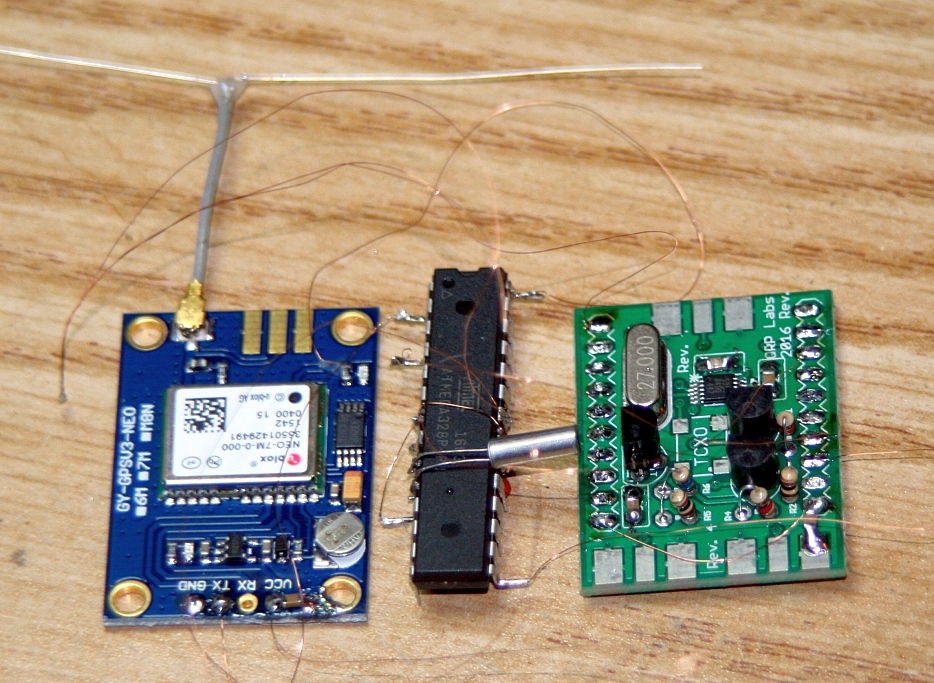
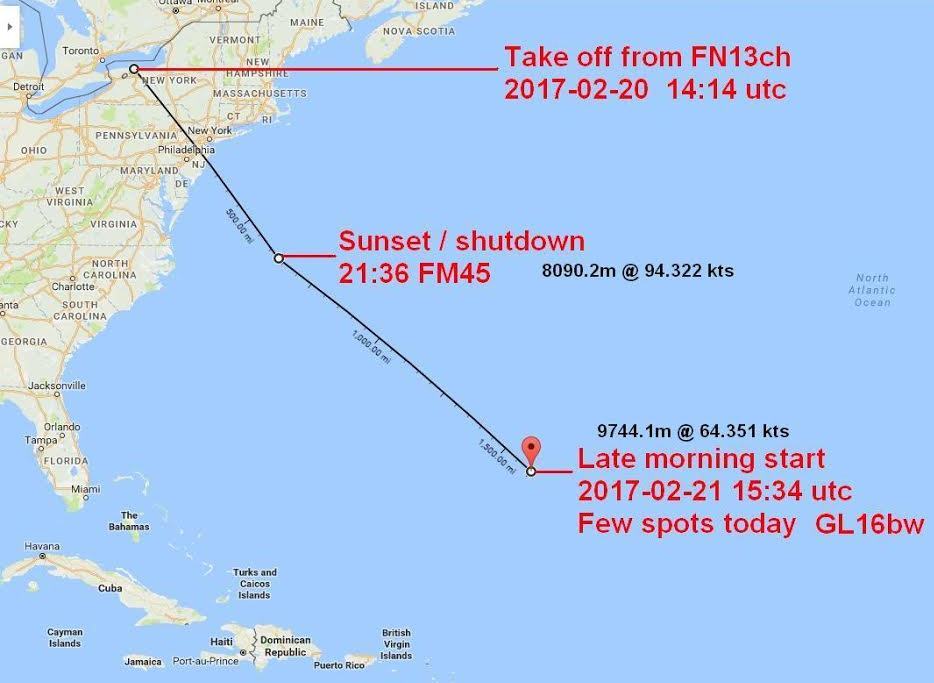
Over in the South Pacific, Bob ZL1RS' "ocean floater" project has now been at sea for 285 days (more than 9 months). An amazing endurance journey! It uses the QRP Labs Ultimate3S transmitter sending WSPR and JT transmissions. The position is now RG93SQ, near New Caledonia. Relatively speaking, it has made a lot of progress West since last month, having evidently seen a period of steady winds (the loops are thought to be more due to wind than ocean currents). The power onboard is 18 D-cell batteries. The battery voltage decline will accelerate as more current is drawn from the batteries by the boost regulator circuit, to maintain the operating voltage.
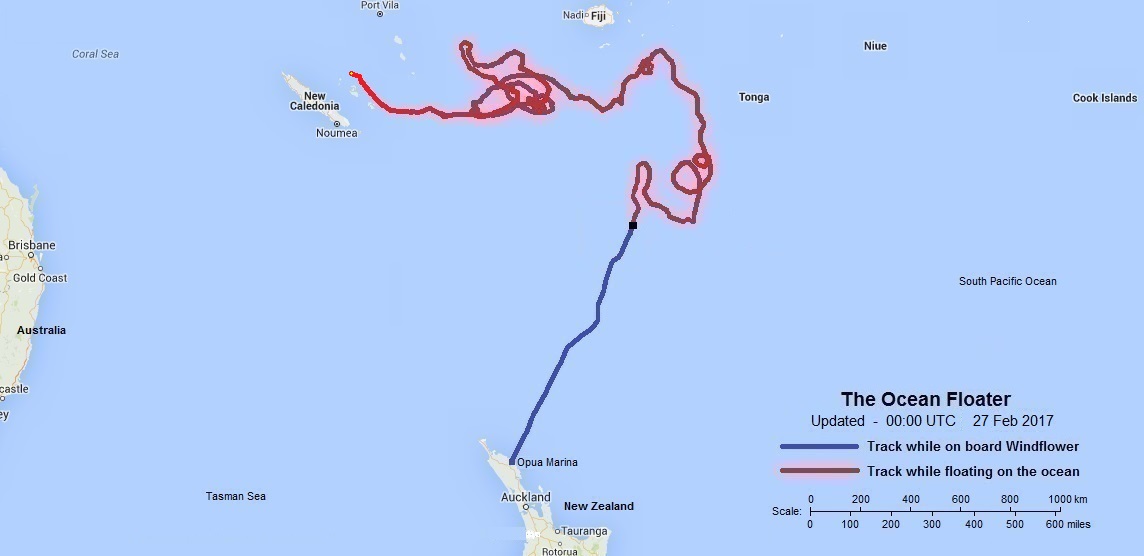
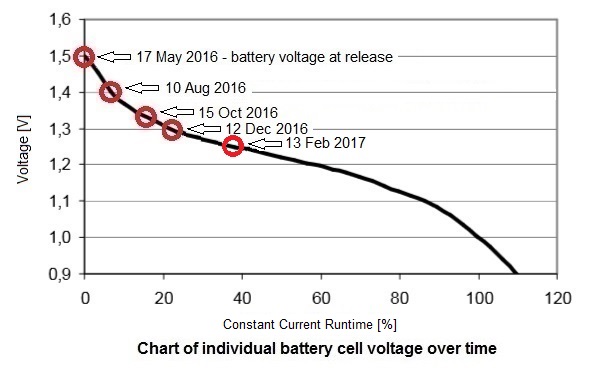
7. Social media, feedback, unsubscribing
Social media: QRP Labs has the following presence on social media. If you use these social media then please join or follow QRP Labs! Announcements such as new products, balloon launches, etc., will be made first in these media!
1) QRP Labs groups.io discussion group https://groups.io/g/QRPLabs for discussion and support on all QRP Labs products
2) QRP Labs Facebook page https://www.facebook.com/QRPlabs/
3) QRP Labs is @qrplabs on Twitter https://twitter.com/qrplabs
Feedback: As always, please do write with any comments, ideas, criticism, feedback of any kind!
Unsubscribing: If you want to unsubscribe from this monthly newsletter, then either log in to your QRP Labs shop account and un-check your newsletter preference, OR, email and we'll take care of it.

